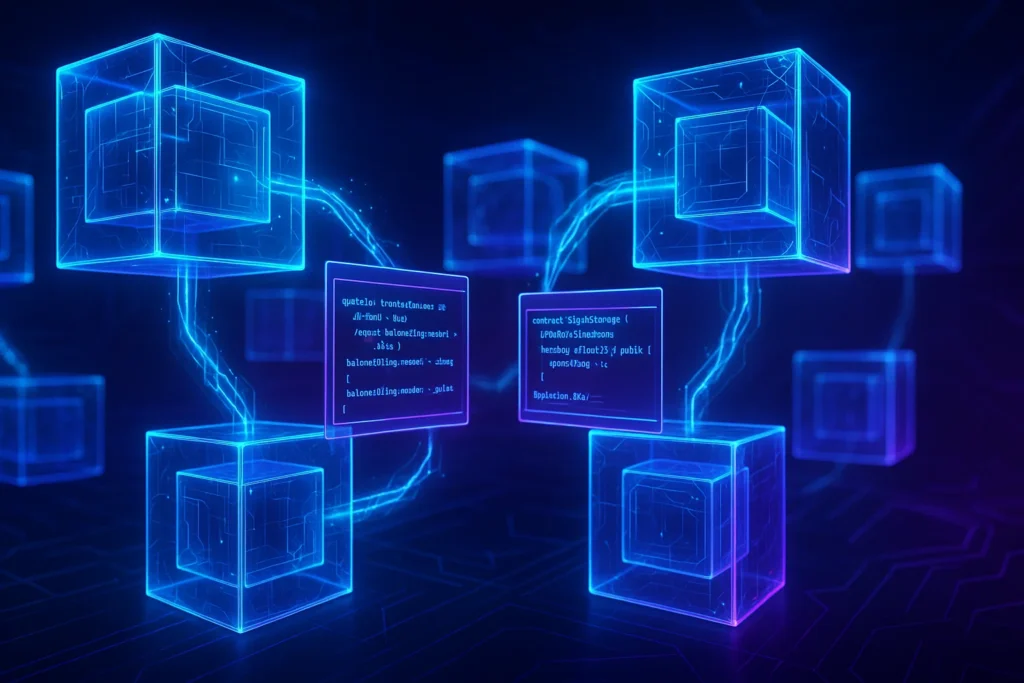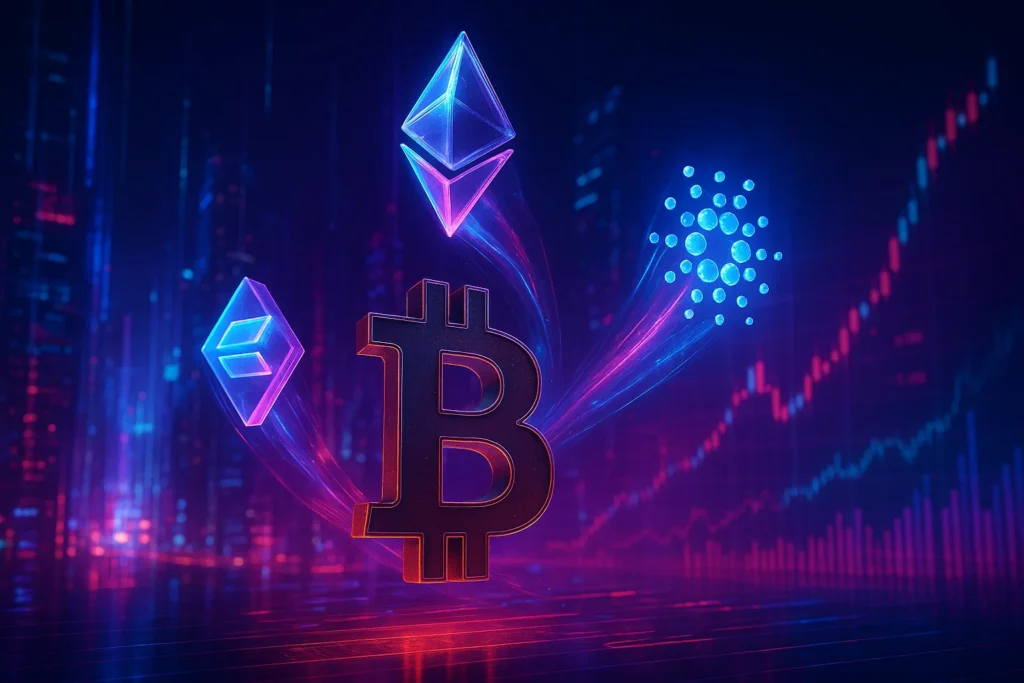.
altcoin vs bitcoin: 5 Reasons Altcoins Win In 2024
Did Bitcoin’s reign as king of crypto truly end yesterday, or are we just witnessing the dawn of a new era where altcoin vs bitcoin isn’t just a comparison, but a declaration of dominance? With the year 2024 unfolding with unprecedented market dynamics, many are looking beyond the established titan, Bitcoin, to the vibrant and rapidly evolving world of altcoins. This year, the landscape has shifted, and the narratives are changing.
Crypto Market Overview: A Shifting Tectonic Plate
The cryptocurrency market in 2024 is a fascinating study in contrasts and convergences. While Bitcoin experienced significant milestones, including the approval of Bitcoin spot ETFs in the US, which brought institutional capital and mainstream attention, the narrative quickly expanded. The total market capitalization has seen robust growth, but the percentage dominance of Bitcoin has subtly decreased as altcoins have exploded.
We’re seeing a significant trend towards utility-driven tokens. Projects focusing on real-world applications, such as decentralized finance (DeFi), non-fungible tokens (NFTs) beyond speculative art, supply chain management, and verifiable digital identity, are attracting considerable investor interest and developer talent. This contrasts with earlier bull runs characterized more by hype and less by tangible use cases.
Meme coins, while often dismissed as frivolous, have continued to demonstrate their cultural influence and ability to generate significant short-term gains, albeit with extreme volatility. Their resilience and community-driven nature mean they remain a noteworthy, if risky, segment.
Airdrops, once a niche marketing tactic, have evolved into a sophisticated distribution strategy, particularly for new blockchain protocols and DeFi platforms. They serve to bootstrap networks, reward early adopters, and generate buzz, often leading to increased trading activity for the newly launched tokens.
Key indicators to watch include:
- Altcoin Market Cap Percentage: A rising percentage indicates altcoin strength relative to Bitcoin.
- DeFi Total Value Locked (TVL): Growth here signals increasing adoption of decentralized financial services, often powered by altcoins.
- NFT Trading Volumes: While fluctuating, sustained volumes in specific NFT sectors can point to broader usability.
- Developer Activity: High activity on blockchain development platforms for specific altcoins often precedes significant network upgrades or adoption.
The market is no longer solely about “digital gold”; it’s about building the decentralized future, and altcoins are at the forefront of this innovation.
The Core Concept: Unpacking the Altcoin Universe
When we talk about altcoin vs bitcoin, it’s essential to understand what altcoins are and how they differ from the original cryptocurrency.
What Are Altcoins?
Altcoins, short for “alternative coins,” are digital currencies that emerged after Bitcoin. Essentially, any cryptocurrency that is not Bitcoin falls into this category. The term “altcoin” encompasses a vast spectrum of projects, each with its unique technology, purpose, and community.
The first major altcoin was Namecoin, launched in 2011, which aimed to create a decentralized domain name system. Since then, thousands of altcoins have entered the market, each attempting to improve upon Bitcoin’s limitations or explore entirely new use cases.
The spectrum includes:
- Platform Coins: Cryptocurrencies that serve as the backbone for decentralized applications (dApps) and smart contracts, like Ethereum (ETH), Cardano (ADA), Solana (SOL), and Avalanche (AVAX).
- Utility Tokens: Tokens that grant access to a product or service on a blockchain network, such as Filecoin (FIL) for decentralized storage or Basic Attention Token (BAT) for digital advertising.
- Stablecoins: Cryptocurrencies pegged to a stable asset like the US dollar, aiming to minimize volatility, examples include USDT, USDC, and DAI.
- Meme Coins: Cryptocurrencies that originated from internet memes or jokes, often driven by community sentiment and social media trends. While some have achieved significant market caps (e.g., Dogecoin (DOGE), Shiba Inu (SHIB)), they are generally considered high-risk due to their speculative nature and lack of fundamental utility.
- Privacy Coins: Cryptocurrencies focused on enhancing transaction anonymity, such as Monero (XMR) and Zcash (ZEC).
Key Components & Technologies
The innovation within altcoins stems from a diverse range of technological advancements and novel approaches to blockchain architecture.
- Smart Contracts: Perhaps the most significant innovation brought by altcoins, exemplified by Ethereum, smart contracts are self-executing contracts with the terms of the agreement directly written into code. They automate processes, reduce the need for intermediaries, and enable complex decentralized applications, forming the bedrock of DeFi and NFTs.
- Proof-of-Stake (PoS) and Variants: While Bitcoin uses Proof-of-Work (PoW), many altcoins have adopted or developed more energy-efficient consensus mechanisms like Proof-of-Stake. PoS allows token holders to “stake” their coins to validate transactions and secure the network, often offering staking rewards. Newer variations like Delegated Proof-of-Stake (DPoS), Proof-of-Authority (PoA), and Proof-of-History (PoH, used by Solana) aim to improve scalability, transaction speed, and energy efficiency.
- Interoperability Solutions: As the crypto space expands, the need for different blockchains to communicate and transact with each other becomes paramount. Projects like Polkadot (DOT), Cosmos (ATOM), and Chainlink (LINK) focus on creating bridges and protocols that enable seamless cross-chain communication, unlocking new possibilities for decentralized ecosystems.
- Scalability Solutions (Layer 2): To address the transaction speed and cost limitations of some base blockchains (Layer 1s), Layer 2 scaling solutions have emerged. These technologies, such as Polygon (MATIC) for Ethereum or the Lightning Network for Bitcoin, process transactions off the main chain, significantly increasing throughput and reducing fees, making cryptocurrencies more practical for everyday use.
- Token Standards: The development of token standards like ERC-20 (for fungible tokens on Ethereum) and ERC-721 (for NFTs) has been crucial in fostering an ecosystem of interchangeable tokens and unique digital assets, driving the growth of DeFi and the NFT market.
These technological underpinnings are what allow altcoins to offer functionalities and solve problems that Bitcoin, in its original design, does not.
The Data-Driven Perspective: Where the Numbers Lead
When assessing altcoin vs bitcoin, data provides the most objective lens through which to view performance, potential, and market sentiment.
Market Data & Trends
The performance of altcoins in 2024, while subject to the overall market’s ebb and flow, has shown distinct trends:
- Altcoin Market Cap Growth: While Bitcoin’s market capitalization continues to be the largest, the cumulative market capitalization of altcoins has seen substantial percentage gains. Data from CoinMarketCap and CoinGecko consistently shows altcoins capturing an increasing share of the total crypto market value, particularly during periods of altcoin season.
- DeFi TVL Surge: The Total Value Locked in Decentralized Finance protocols has surged in 2024, surpassing previous all-time highs. Many of these DeFi applications are built on or utilize specific altcoins (e.g., ETH, SOL, AVAX, MATIC), directly correlating their success with the underlying platform’s performance. This growth signifies real economic activity and utility, driving demand for these altcoins.
- NFT Market Resilience: Despite fluctuations, specific sectors of the NFT market have shown remarkable resilience and innovation. Projects connecting NFTs to gaming, ticketing, or loyalty programs are seeing renewed interest, which in turn boosts the utility and value of their native tokens.
- Airdrop Impact: Successful large-scale airdrops have demonstrably impacted the price and trading volume of new tokens. For instance, the airdrop for protocols like Aptos (APT) or the anticipated zkSync airdrop generated significant buzz and trading activity, showcasing airdrops as a powerful tool for user acquisition and market entry.
For instance, consider the historical data: while Bitcoin might have seen a respectable 100% gain in a given period, many leading altcoins have achieved 300%, 500%, or even higher returns during altcoin rallies, driven by groundbreaking tech or strong community adoption. The key is not just raw returns, but the rate of innovation and adoption that altcoins often represent.
Tokenomics & Market Health
Tokenomics, the study of the economic design of a cryptocurrency, plays a pivotal role in its long-term viability.
- Supply and Demand Dynamics: Altcoins often experiment with different supply models. Some have fixed supplies like Bitcoin, while others employ deflationary mechanisms through token burns, or inflationary models with scheduled token releases. Understanding these mechanics is crucial. A token with a limited supply and increasing demand due to robust utility is inherently more likely to appreciate. For example, projects implementing token burns on transaction fees or protocol revenue can create scarcity.
- Utility and Value Accrual: The health of an altcoin is increasingly tied to its utility. Does the token power a decentralized application? Does it grant governance rights? Does it offer staking rewards? Altcoins that can demonstrate clear value accrual mechanisms – where the token’s demand is organically linked to the usage of its network or platform – tend to be more sustainable. Ethereum 2.0’s transition to PoS, for example, introduced staking rewards, creating a new demand driver for ETH.
- Decentralization and Governance: While often celebrated as a strength of Bitcoin, the degree of decentralization and the models of governance employed by altcoins are critical. Projects with active, engaged communities that participate in on-chain governance can adapt more effectively to market changes and user feedback, fostering a healthier ecosystem.
A comprehensive Altcoin comparison often highlights how different tokenomics models yield vastly different long-term outcomes. For example, comparing Solana’s high-throughput model with Ethereum’s battle-tested smart contract capabilities, while analyzing their respective token distribution and utility, provides a nuanced understanding of their market positions.

Risks, Challenges & Competition
Despite the exciting potential, it’s crucial to approach altcoins with a clear understanding of their inherent risks.
Risks of Altcoins and Meme Coins
- Extreme Volatility: Altcoins, especially newer or smaller-cap ones, can experience price swings far exceeding Bitcoin’s. Rapid gains can be followed by equally rapid, significant losses, making them highly speculative.
- Security Vulnerabilities: The innovative nature of altcoin technology can also lead to unforeseen security flaws. Smart contract exploits, network hacks, and wallet vulnerabilities have resulted in substantial losses for investors in the past. The rush to market can sometimes mean less rigorous security auditing.
- Regulatory Uncertainty: The regulatory landscape for cryptocurrencies is still evolving globally. Altcoins, with their diverse functionalities and issuance models, may face more scrutiny and a higher risk of regulatory action compared to Bitcoin, which is often viewed more as a commodity.
- Project Failure Risk: Many altcoin projects fail to gain traction, attract users, or achieve their stated goals. Limited funding, poor execution, or lack of market demand can lead to the abandonment of a project, rendering its tokens worthless.
- Market Manipulation: The lower liquidity in many altcoin markets makes them more susceptible to pump-and-dump schemes and other forms of market manipulation.
How Altcoins Stack Up Against Competitors?
When we discuss altcoin vs bitcoin, the “competitors” are not just other cryptocurrencies but also traditional financial systems and emerging digital technologies. Bitcoin’s primary value proposition has historically been as a store of value and a decentralized, censorship-resistant medium of exchange. Altcoins, however, are often vying for dominance in different arenas.
Here’s a simplified comparison:
| Feature | Bitcoin (BTC) | Leading Altcoins (e.g., ETH, SOL, ADA) | Traditional Finance (Banks, Stocks) |
|---|---|---|---|
| Primary Use | Store of Value, Digital Gold, P2P Payments | Smart Contracts, DeFi, NFTs, dApps, Specific Utility | Payments, Investments, Wealth Management |
| Technology | Proof-of-Work (PoW), Limited Smart Contracts | Proof-of-Stake (PoS) and variants, Advanced Smart Contracts, High Throughput | Centralized Ledgers, Established Infrastructure |
| Scalability | Limited (improving via Lightning Network) | Generally Higher (varies by chain) | High (Mature Infrastructure) |
| Innovation Pace | Slower, focus on stability and security | Rapid, experimental, diverse use cases | Incremental, regulated |
| Energy Usage | Higher (PoW) | Significantly Lower (PoS) | Varies, often high energy intensive infrastructure |
| Risk Profile | High volatility, regulatory risk | Very High volatility, project failure risk, smart contract risk | Lower volatility (traditional assets), regulatory risk |
| Potential | Store of Value, Global Digital Reserve Asset | Enabling Decentralized Web, Financial Inclusion, New Digital Economies | Evolving with technology |
| Community | Strong, established, ideological focus | Diverse, developer-driven, application-specific | Corporate, shareholder-focused |
As you can see, altcoins are not always directly competing with Bitcoin’s core function. Instead, they are often seeking to create entirely new categories of digital assets and decentralized services that traditional finance struggles to match in terms of speed, accessibility, or innovation.
The Future Outlook: What’s Next for Altcoins?
The trajectory for altcoins in 2024 and beyond appears to be one of continued innovation, sector specialization, and increasing integration into the broader digital economy.
What’s Next for Altcoins?
- Continued DeFi Dominance: Decentralized Finance is no longer a niche. As protocols mature and user interfaces become more intuitive, we can expect DeFi to handle an ever-larger portion of financial transactions, from lending and borrowing to trading and asset management. This will drive demand for the native tokens of these DeFi ecosystems. The growth of real-world asset tokenization on blockchains will further fuel this trend.
- The Rise of Layer 2 Scaling Solutions: As networks like Ethereum continue to scale, Layer 2 solutions will become indispensable. Tokens associated with these scaling technologies (e.g., ETH for L2 gas fees, L2 native tokens like MATIC) are positioned for significant growth as they improve user experience and reduce costs for everyday transactions.
- Interoperability as a Key Driver: The ability for different blockchains to seamlessly communicate will be crucial for the maturation of the crypto space. Projects solving interoperability challenges will likely see increased adoption and value.
- Tokenization of Everything: The trend of tokenizing real-world assets (real estate, commodities, intellectual property) on blockchains is gaining momentum. This will create new use cases for utility tokens and platform coins that facilitate these processes.
- AI and Blockchain Synergy: The integration of Artificial Intelligence with blockchain technology is an emerging frontier. Projects focusing on decentralized AI marketplaces, AI-powered smart contracts, or verifiable AI models could represent the next wave of innovation.
- Increased Utility for Meme Coins: While speculative, some meme coins with strong communities might transition towards greater utility, perhaps by funding decentralized development, offering access to metaverses, or supporting charitable causes, giving them a more tangible value proposition beyond pure speculation.
The narrative is shifting from “will crypto replace fiat?” to “how will decentralized technologies transform industries?” Altcoins, with their diverse applications, are likely to be the primary drivers of this transformation.
Conclusion
In the dynamic arena of altcoin vs bitcoin, 2024 marks a pivotal year where altcoins are not merely alternatives but increasingly the engines of innovation, utility, and potentially, the leading edge of crypto asset performance. We’ve explored how they offer advanced functionalities through smart contracts and diverse consensus mechanisms, showcasing significant market growth driven by DeFi and the ongoing tokenization trend.
While Bitcoin remains a cornerstone of the digital asset space, its role as the primary innovation driver has been supplemented, and in some areas, surpassed by the rapid development and adoption of altcoins. The data points to a market that values utility, scalability, and novel solutions, all of which are hallmarks of the altcoin ecosystem.
However, the inherent volatility and risks associated with altcoins cannot be overstated. Thorough research, understanding tokenomics, and a clear risk management strategy are paramount for anyone looking to navigate this exciting but challenging landscape.
What are your thoughts on the altcoin vs bitcoin debate for 2024? Do you believe altcoins are poised for further outperformance? Which altcoins are you most excited about and why? Share your insights in the comments below!
If you found this analysis helpful, consider subscribing to our newsletter for more in-depth crypto market insights, strategies, and updates on the latest developments in the world of altcoins and beyond. You might also want to check out our guide on Altcoin comparison for more detailed breakdowns.
FAQs
Q1: Is it always better to invest in altcoins than Bitcoin?
Not necessarily. Bitcoin serves as a foundational store of value and a hedge against inflation for many. Altcoins offer higher potential for explosive growth but also come with significantly higher risk. A balanced portfolio often includes both, with the allocation depending on your risk tolerance and investment goals.
Q2: How can I identify promising altcoins?
Look for projects with:
- Clear Utility: A defined problem its token solves or a service it provides.
- Strong Development Team: Experienced and transparent founders and developers.
- Robust Tokenomics: Sustainable supply, demand, and value accrual mechanisms.
- Active Community: Engaged user base and developer community.
- Solid Technology: Scalable, secure, and innovative blockchain architecture.
Q3: Are meme coins a good investment?
Meme coins are highly speculative and primarily driven by community hype and social media trends. They carry extreme risk and are not suitable for most investors. While some have seen massive gains, they can also lose value just as quickly. Invest in meme coins only with capital you are prepared to lose entirely.
Q4: What is an airdrop, and how can I participate?
An airdrop is a distribution of free cryptocurrency tokens, often as a marketing strategy to promote a new project or reward existing users of a platform. To participate, you typically need to hold a specific token, use a particular dApp, or perform simple social media tasks. Keep an eye on crypto news outlets and project announcements for upcoming airdrops.
Q5: How does Proof-of-Stake (PoS) compare to Proof-of-Work (PoW)?
Proof-of-Work (PoW), used by Bitcoin, requires miners to solve complex computational puzzles, consuming significant energy. Proof-of-Stake (PoS), used by many altcoins, allows token holders to “stake” their coins to validate transactions, securing the network more energy-efficiently and often rewarding stakers with more tokens. PoS is generally considered more scalable and environmentally friendly.







Volatility Trading: 7 Secrets Can You Really Ride the Meme Coin Wave to Riches - Daily Coine
[…] emerge victorious? Or are meme coins just a casino in disguise? Understanding the fundamentals of Volatility Trading is not just advantageous; it’s the bedrock upon which any potential profit can be […]